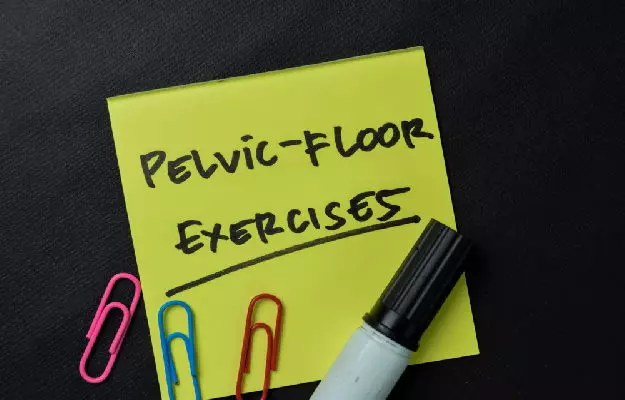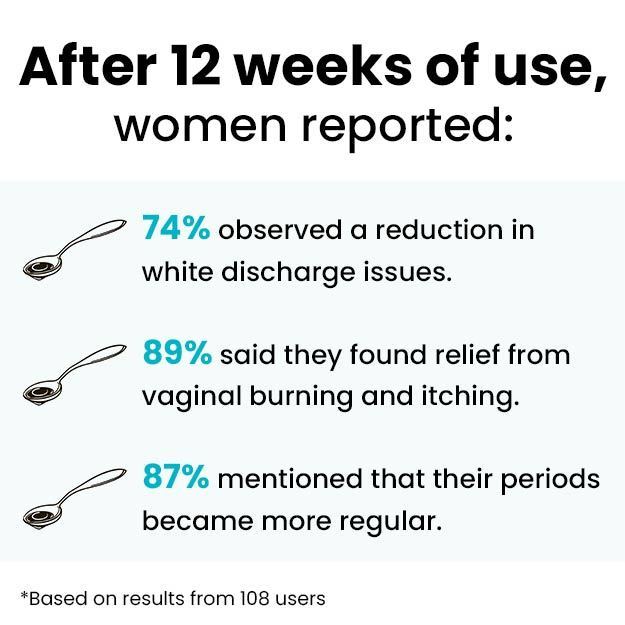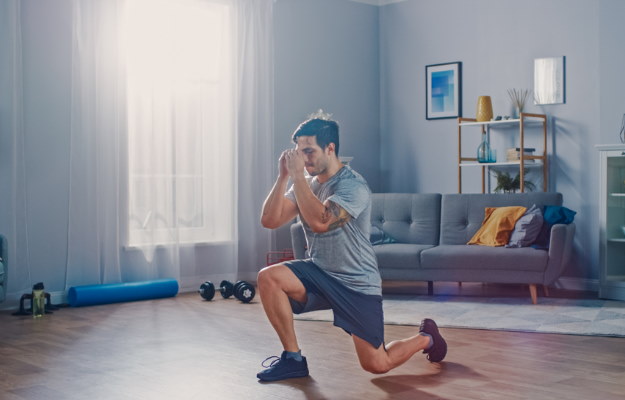If you are unable to control urination while sneezing, laughing or coughing, you are not alone. Pelvic floor problems are common and can happen to anyone.
The good news is that incorporating pelvic floor exercises into your daily routine can help strengthen your pelvic floor muscles, as well as reduce the severity of pelvic organ prolapse symptoms.
(Read more -Yoga poses to increase sex power)
- what is pelvic floor - What is pelvic floor
- What do the pelvic floor muscles do? - What do the pelvic floor muscles do?
- How to locate pelvic floor muscles - How to locate pelvic floor muscles?
- Activate pelvic floor muscles - Activate pelvic floor muscles
- How to do pelvic floor exercises - How to do pelvic floor exercises
- some pelvic floor exercises
- 1.kegel exercises
- 2. tighten and release
- 3. bridge pose
- 4. squats
- 5. Happy Baby Pose
- Causes of pelvic floor weakness
- pelvic floor muscle weakness symptoms
- when to see a doctor
- Some pointers are being given to you by which you will be able to know when you have to meet the doctor?
- Summary
what is pelvic floor - What is pelvic floor
The pelvic floor is a group of muscles and ligaments that support the bladder, uterus (womb), and intestines. The openings from these organs, the urethra from the urinary bladder, the vaginal opening from the uterus and the anus from the intestine, pass through the pelvic floor itself. The pelvic floor muscles are attached to the pubic bone at the front and the tail bone at the back and form the pelvis i.e Forms the base of the pelvis.
What do the pelvic floor muscles do? - What do the pelvic floor muscles do?
When pelvic floor muscles are strong, it helps prevent problems related to pelvic organs such as –
- Reducing the problem of inability to control urine or stool (involuntary loss of urine)
- Reducing problems related to bladder, uterus and intestine
If men have any problem related to urine or feel weakness in immunity and muscles, then men can use Shilajit, the Ayurvedic energy for the treatment of diabetes.
(Read more -Exercises for better sex life)
How to locate pelvic floor muscles - How to locate pelvic floor muscles?
To locate the pelvic floor muscles, feel for some time that you have stopped your urine and gas. By doing this, the muscles in which you feel pressure are the pelvic floor muscles.
But you should not stop urination regularly as it can be harmful for your bladder.
Activate pelvic floor muscles - Activate pelvic floor muscles
How to activate pelvic floor muscles before doing pelvic floor exercises? This has to be learned.
First, find yourself a comfortable position and space, relax all the muscles and focus on your breathing.
To activate the anterior pelvic floor muscles, repeat the movement to stop the flow of urine.
To activate the posterior pelvic floor muscles, try to prevent gas from passing.
Now try to do both the activities together.
How to do pelvic floor exercises - How to do pelvic floor exercises
Begin pelvic floor exercises by emptying the bladder.
Tighten the pelvic floor muscles. Hold for 3 to 5 seconds and rest for at least that amount of time. Repeat this process about 10 times
Keep breathing normal and tighten and relax the pelvic floor muscles quickly and repeatedly.
Imagine riding in an elevator. As the lift goes up the pelvic floor muscles tighten and as the lift comes down the muscles relax.
To strengthen your pelvic floor muscles, squeeze the muscles up to 10 times while standing, sitting, or lying down.
Don't hold your breath for long at the same time.
Once you get used to doing pelvic floor exercises, increase the time.
Do not do pelvic floor exercises more than once a day in the beginning. Perform a single set.
Within a few months, you will start seeing results. You can do these exercises even while working.
1.kegel exercises
Kegel exercises focus on tightening and holding the muscles that control urine flow.
To perform this exercise, sit in a comfortable position, close your eyes and feel the muscles that may block urine flow. Tighten these muscles as much as possible. Hold this position for 3-5 seconds. It should feel as if the muscles are lifting. Release the muscles and relax for a few seconds. Repeat this up to 10 times. Kegels can be done in different ways by standing, lying down or bending on all fours.
(Read more -Kegel exercises for men)
2. tighten and release
This is a fast exercise that helps the pelvic floor muscles to respond quickly.
To perform this exercise, sit in a comfortable position. Feel the pelvic floor muscles. Try to tighten and loosen the muscles as quickly as possible. Rest for 3-5 seconds. Repeat 10-20 times per set. These exercises can be done twice a day later.
3. bridge pose
While the bridge exercise primarily strengthens the buttocks, it also helps strengthen the pelvic floor muscles.
To do this exercise, lie on your back, bend your knees, keep your feet flat on the floor hip-width apart. Keep the arms at the sides with the palms facing down.
Contract the buttocks and pelvic floor muscles and lift the buttocks several inches off the ground. Hold this position for 3-8 seconds. Relax the buttocks and pelvic floor muscles, and lower the buttocks to the ground. Repeat this up to 10 times per set. As your muscle strength increases with pelvic floor exercises, many people find they can perform more repetitions.
(Read more -Yoga for Premature Ejaculation)
4. squats
Squats can help strengthen the pelvic floor and buttocks in children. To perform a squat, stand with your feet hip-width apart and feet flat on the floor. Bend the knees to bring the buttocks toward the floor, only going as low as feels comfortable. Keep your back straight and slightly bent forward. The knees should be in line with the toes. Focus on tightening the buttocks and pelvic floor muscles as you return to the standing position. Repeat this exercise about 10 times. Rest before doing any additional sets.
5. Happy Baby Pose
Happy Baby Pose is a great exercise for your pelvic floor routine. For this, bend your knees and lie down on the floor. Bring your knees at 90 degrees toward your stomach, with the soles of your feet pointing upward. Hold the outer or inner side of your feet. Open the knees until they are slightly wider than your body. Then, try to bring your legs up to your face. Your heels should be above your knees. Bend your ankles and press your feet into your hands.
Causes of pelvic floor weakness
Some common causes of pelvic floor muscle weakness
-
pregnancy
-
problems after delivery
-
being overweight
-
Constipation and straining during bowel movements
-
constant heavy lifting
-
cough a lot
-
Changes in hormonal levels at the time of menopause
-
old age
If women are troubled by the problem of weight gain and menstrual cycle, then try Ayurvedic medicines like Prajanas Women Health Capsule, Patrangsav, Ashokarishta.
pelvic floor muscle weakness symptoms
-
Pain in the pelvic area, genitals, perineum, or rectum
-
Sexual dysfunction including erectile dysfunction, pain or numbness in the genitals during or after sex
-
Pelvic organ prolapse, which causes a bulging or heaviness in the vagina
-
chronic lower back pain
when to see a doctor
Many people include pelvic floor exercises in their daily routine, but if you are having problems with bowel or bladder control even after exercising, then definitely talk to your doctor.
Some pointers are being given to you by which you will be able to know when you have to meet the doctor?
-
sudden uncontrolled passing of urine or stool
-
problem with bowel movements
-
pelvic pressure or discomfort
-
seeing or feeling a bulge protruding from the vagina or anus
-
pain while urinating
-
Difficulty emptying the bladder completely
(Read more -Urinary Incontinence symptoms, causes, treatment )
Remember, it's always good to talk to your doctor, even if you think your symptoms aren't that severe. Finding the right treatment for your condition will help you feel better and prevent other pelvic floor muscle problems.






































